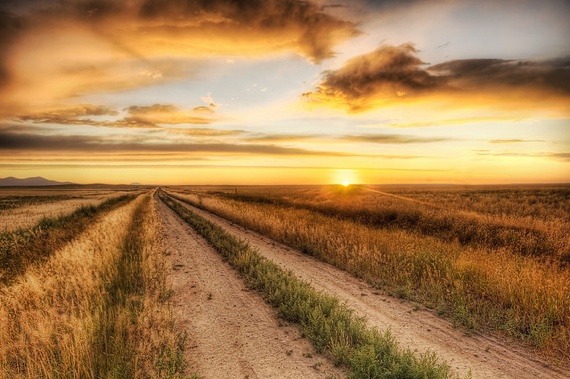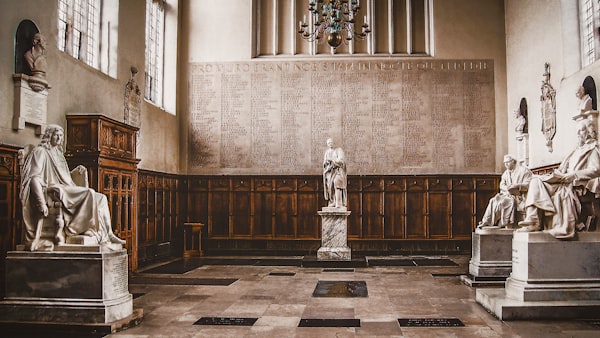Film Discussion: The Hero's Journey

(This is part of my series on how to better dialogue with and about films. See more here)
As I mentioned in the plot section of this series, Joseph Campbell concluded from his study that every myth, every story, follows a similar pattern. Each hero goes through similar steps. He called it "the hero's journey."
Now this might seem strange at first, but know that just because stories have similarities doesn't mean they are the same. Like I wrote in the genre post, these similarities actually help us uncover deeper meaning within the story.
So what does the hero's journey consist of? Well, according to Campbell, there are 12:
1. The Ordinary World
We are introduced to the hero. This is where they live in their "normal" life, although usually something isn't quite right, leading to their later adventure.
2. The Call to Adventure
The hero is given reason to leave his ordinary world, his old life. The hero begins to face his journey.
3. Refusal of the Call
Either the hero, or someone close to the hero, expresses uncertainty and hesitation, trying to avoid the call.
4. Meeting with the Mentor
The hero encounters a mentor, usually an older, more experienced character, who gives the hero advice, training, and possibly equipment needed for the journey.
5. Crossing the Threshold
Hero finally leaves the ordinary world and sets out into the new world on the journey.
6. Tests, Allies and Enemies
The hero must find who his friends and enemies are as he undergoes various challenges in the new world.
7. Approach
The hero and his allies prepare for the major challenge.
8. The Ordeal
Near the middle of the story, the hero must face death or another fear.
9. The Reward
The hero now possesses a "treasure" from facing death.
10. The Road Back
The hero must complete the adventure, bringing the reward back. Might contain a chase scene.
11. The Resurrection
One last moment of sacrifice is required, the hero must face death again and be reborn. Usually this event brings some resolution.
12. Return with the Elixir
The hero comes home again transformed, now having the ability to transform others as well.
So does that make a little more sense? Can you see how that fits in with most stories? If you're interested in reading more about it, there is plenty more at The Writer's Journey, where Chris Vogler has done a lot of work supplying a more in-depth look at this process.
But how does it work with movies? Well, just take a movie and see how it fits. Again, like the genre, see what is similar and what is different. If for some reason there isn't a mentor character, could it be that the mentor is actually within the hero himself? And if so, doesn't that show us that the filmmaker believes any knowledge we need can be found from within?
Each film may not explicitly have each stage, but it's usually there, and it is always intriguing to see why the changes are made if there are any. They don't even have to be in this order, so it's interesting to note why things may happen in a different order as well.

Let me go ahead and do an example using Star Wars Episode IV. It's pretty easy with this film because it draws so heavily from other myths.
- The Ordinary World – We see Luke on Tatooine, living with his aunt and uncle. We can tell that he isn't meant to stay there forever, that he has a bigger destiny, so he is uneasy.
- The Call to Adventure – R2D2 carries a message to find Obi-Wan, and the adventure begins.
- Meeting with the Mentor – The mentor occurs slightly earlier than the refusal, as Obi-Wan provides a furthering of the call, to go help Leia. His mentorship continues long into the film however. He also gives Luke his father's lightsaber.
- Refusal of the Call – Luke is afraid to leave Tatooine, says that he can't leave. Though he wants adventure, he's not ready to leave.
- Crossing the Threshold – When his home is destroyed by the Empire, Luke decides to help the Princess and leave Tatooine.
- Tests, Allies and Enemies – They meet up with Han and Chewie. They must escape stormtroopers, Jabba, and the cantina. They then find that Alderaan is destroyed and are taken onto the Death Star.
- Approach – The heroes prepare to rescue the Princess, trying to find where she is and how to rescue her.
- The Ordeal – Han and Luke are able to save the Princess, but to escape, Luke must face the death of his mentor as Vader strikes down Obi-Wan.
- The Reward – They successfully rescued the Princess, so all is not lost.
- The Road Back – They now attempt to bring Leia back to the Rebel base. They are chased by TIE fighters on the way.
- The Resurrection – Luke now must destroy the Death Star. He barely escapes thanks to Han's help, and is able to destroy the space station due to the help of Obi-Wan.
- Return with the Elixir – Luke and Han return and are rewarded for their bravery. All benefit from this victory over the Empire, and these two heroes live to fight another battle, their aid eventually allowing the Rebel Alliance to defeat the Empire for good.
You see, it's not too difficult! And by breaking it down like this, hopefully you are able to notice parts of the story you hadn't before, or at least how parts are related to one another.
Homework
Do the same thing with a movie you watch. Write out the 12 steps and where each one lands in the story. Then come back and write something you noticed from doing this in the comments.
(Images thanks to Stuck in Customs and Kalexanderson)




